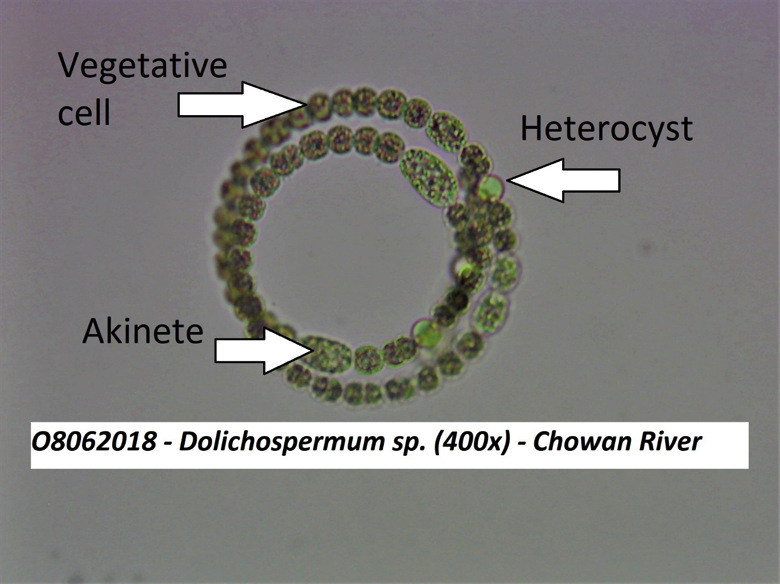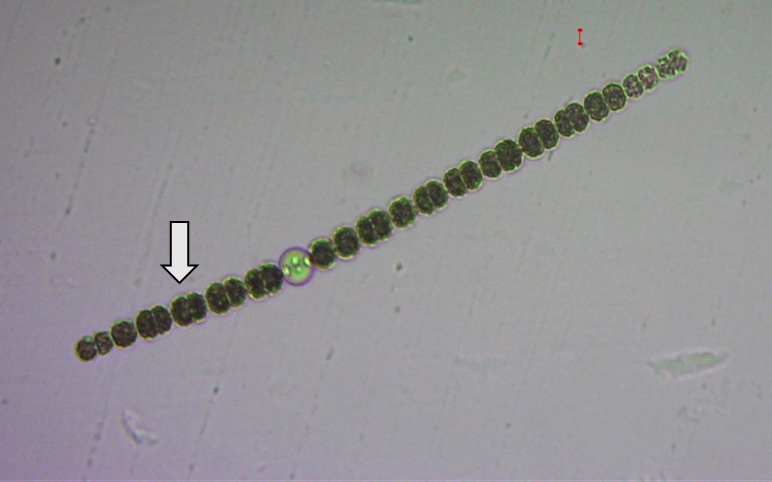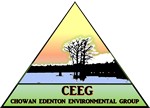Jump in and help with a special project for the Albemarle Sound region of North Carolina. This citizen science project will help build a database of cyanobacteria bloom events correlated to specific characteristics of the algal cells at certain times of the year.
We have been photographing strands of Dolichospermum (Anabaena) for the past few years and would like to correlate “major bloom events” with the quantity of nitrogen-fixing specialized cells that can be observed in these strands. The nitrogen-fixing cells are called heterocysts. By counting the number of heterocysts compared to the number of vegetative cells in an algal strand, we can start to understand how seasonal changes and extreme weather events may influence the amount of nitrogen fixation that is occurring within these Dolichospermum strands.
Terminology
Heterocyst – differentiated cells specialized for Nitrogen fixation in an aerobic (with oxygen) environment. They are formed in response to a lack of fixed nitrogen (NH4 or NO3).
Akinete – thick walled dormant cell filled with food reserve; have a normal cell walls
Vegetative cell – cells that are photosynthetic and are capable of differentiating into specialized cells such as heterocysts.

How to Count Vegetative Cells
The heterocysts and akinetes are generally quite easy to pick out and count unless the cell strands are piled up on each other or coiled up so that the microscope cannot see through them. There is one clear heterocyst in the micrograph below. The vegetative cells, however, are constantly dividing into 2 daughter cells by asexual reproduction making it difficult to count 1 or 2 cells. If the cells are in the process of cell division, count as 1 cell. If it is clearly one cell, then count as 1. There are 19 vegetative cells in the example below.

Reference: https://www.sciencedirect.com/topics/pharmacology-toxicology-and-pharmaceutical-science/diazotroph
Instructions:
- Select a random micrograph from the collection (opens in a new window).
- Access the Heterocyst Count Form (opens in a new window or use below) and answer the questions. You will need to toggle between the micrograph and the form as they will open in separate windows or tabs.
- Share your completed survey by clicking submit.
